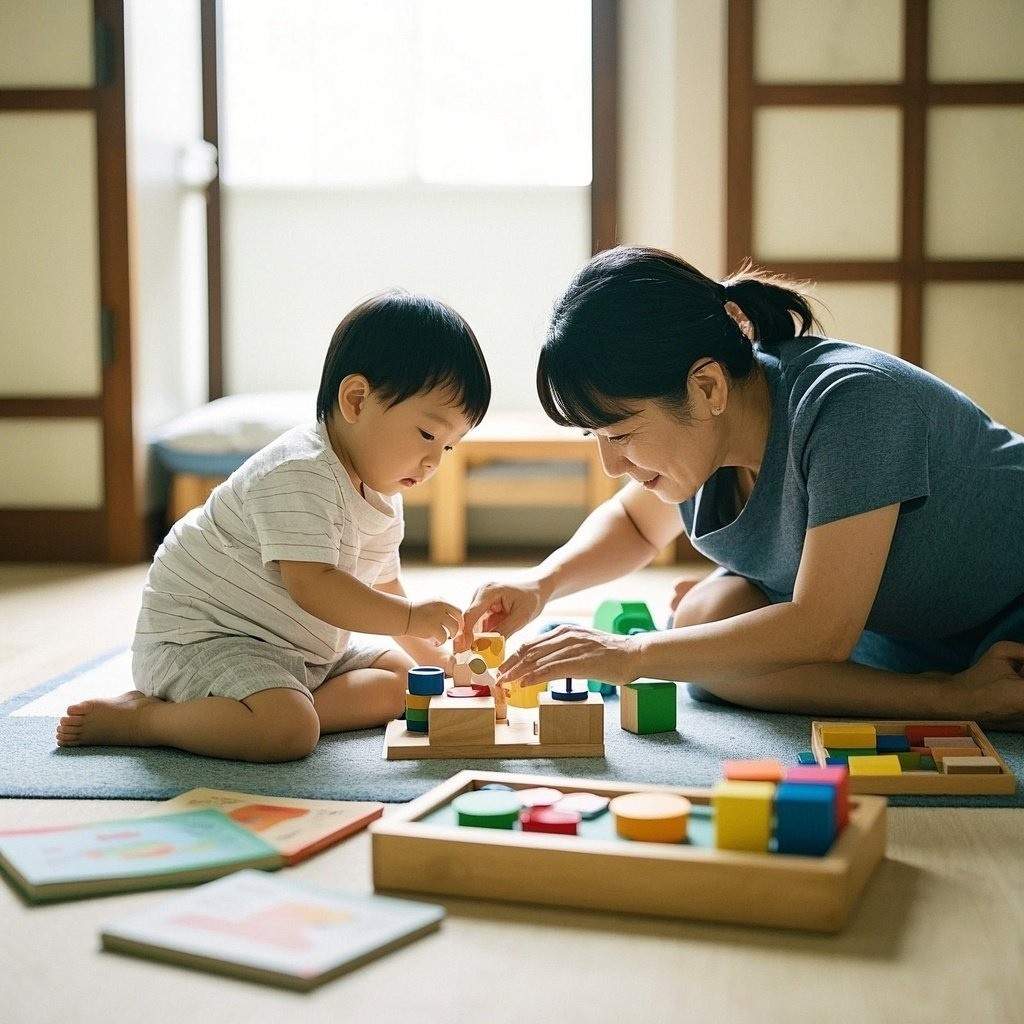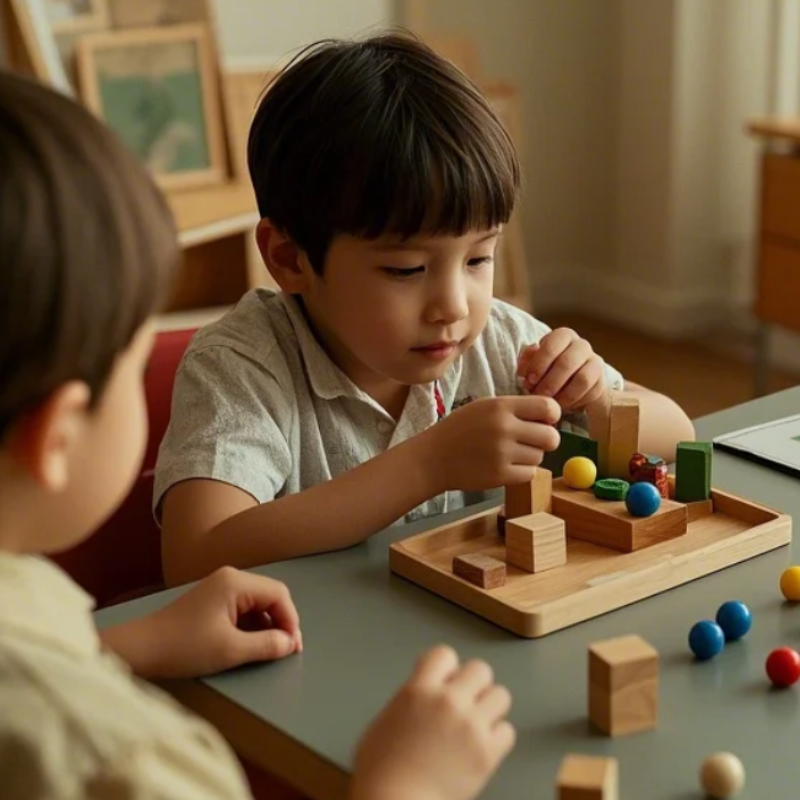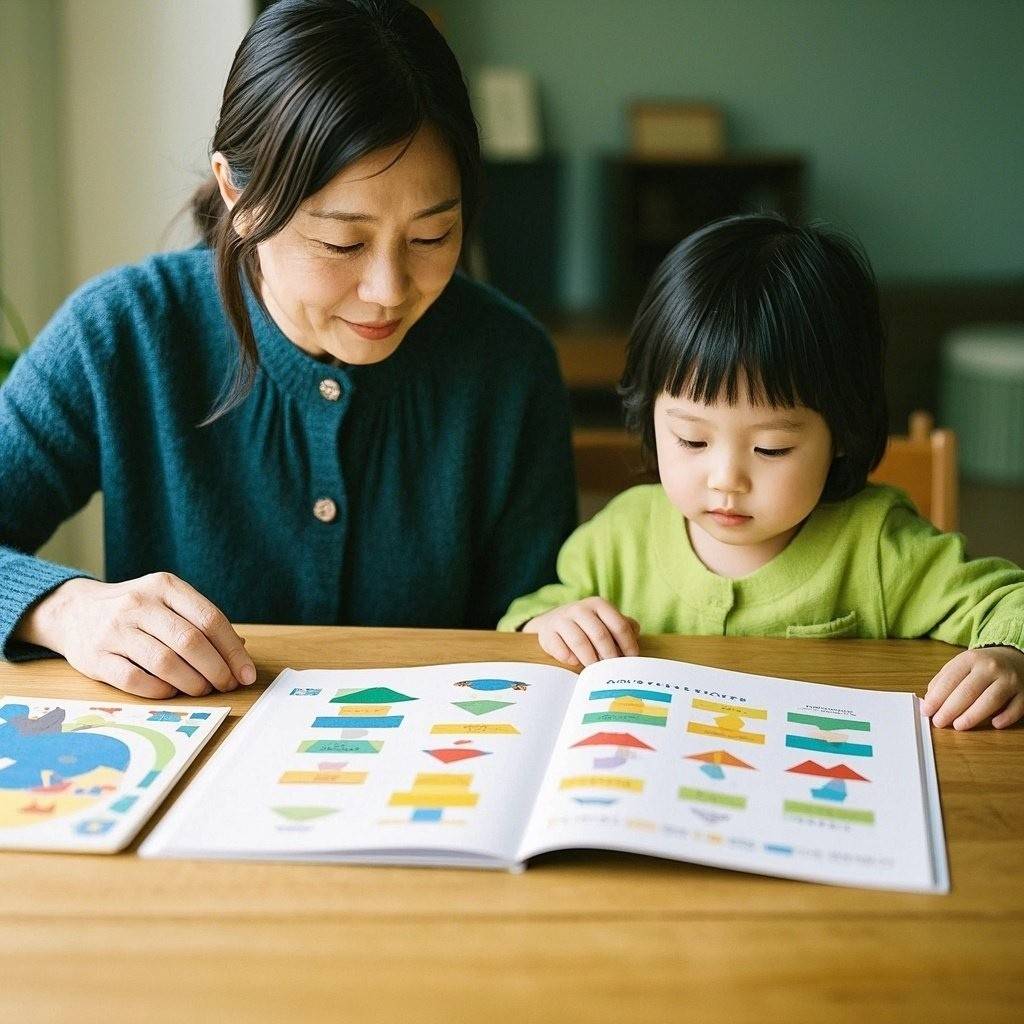Introduction
Early childhood, typically defined as the period from birth to around eight years old, represents one of the most crucial developmental phases in a person’s life. During this time, children undergo rapid transformations physically, cognitively, socially, and emotionally. Providing a nurturing and structured environment that balances playful exploration with guided learning can have long-lasting positive effects on a child’s trajectory.
Quality early childhood programs—which might include preschool, pre-kindergarten, or structured daycare settings—offer targeted activities and curricula designed to support each developmental domain. By focusing on areas such as socialization, cognitive development, emotional and behavioral regulation, and readiness for formal schooling, these programs help children cultivate skills and attitudes that form the bedrock of lifelong learning.
In the following sections, we’ll delve into the specific advantages of early childhood development programs, from fostering strong social skills to developing cognitive competencies, emotional stability, and readiness for academic success. We’ll also highlight the importance of structured learning environments in ensuring that children receive the guidance and support necessary to thrive.
1. Early Childhood Development Benefits
Holistic Growth
At its core, early childhood development aims to address every aspect of a child’s growth—physical, cognitive, social, and emotional. High-quality programs recognize that children don’t learn skills in isolation; rather, learning in one domain (such as language) often goes hand in hand with gains in another (such as social skills). Activities that combine different types of play (sensory, motor, imaginative) fuel this integrated development.
Narrowing Educational Gaps
Research consistently shows that children who engage in early education are more likely to succeed academically later on. By exposing them to foundational concepts in math, language, and social interaction from an early age, these programs help level the playing field. Children from diverse backgrounds can enter elementary school better prepared, reducing achievement gaps that might otherwise persist.
Building Confidence
Engaging in stimulating activities—like singing, art projects, or simple science experiments—helps children discover their interests and capabilities. Frequent praise, gentle guidance, and the thrill of mastering a new task contribute to a child’s sense of accomplishment and positive self-esteem. As confidence grows, children become more willing to explore new ideas, take risks, and persist in the face of challenges.
Setting the Stage for Lifelong Learning
When children associate learning with enjoyment and exploration, they develop a positive attitude toward education. This outlook can carry them through more rigorous academic settings. Many educators describe these early experiences as the “spark” that encourages curiosity and fosters a love of discovery, often lasting well beyond the preschool years.
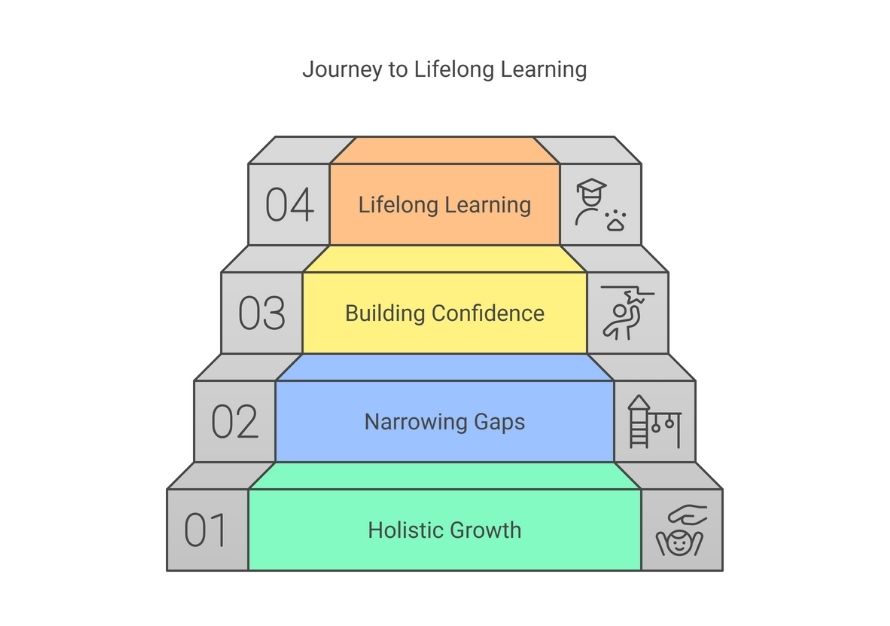
2. Socialization Skills
Peer Interaction
One of the main objectives of early childhood programs is to provide children with opportunities to interact with peers regularly. Learning to communicate, take turns, share, and handle minor conflicts lays the groundwork for forming healthy relationships. These social skills don’t develop overnight; they emerge through repeated practice and guidance in a nurturing environment where mistakes are viewed as learning opportunities.
Emotional Intelligence
Socialization isn’t just about following rules; it also involves recognizing and respecting others’ feelings. Children in group settings gain insight into empathy, compassion, and consideration. They observe how peers react in different situations—sadness, frustration, excitement—and, with adult guidance, learn strategies for offering support. Over time, this fosters a sense of emotional intelligence crucial for navigating relationships in later life.
Respecting Boundaries
Preschool and similar programs often have clear boundaries: designated play areas, rules about personal space, and guidelines for sharing. Learning to respect these boundaries teaches children about consent and mutual respect, a lesson that extends into all facets of life. For instance, a child might learn to wait patiently for a turn on the slide or ask permission before borrowing a classmate’s crayon—simple acts that build a lifelong sense of courtesy and respect.
Teamwork and Cooperation
Projects like building a block tower or creating a group art mural require collaboration. Children quickly discover that working together can be both enjoyable and productive. These cooperative endeavors teach them problem-solving, compromise, and the idea that a collective effort can yield greater results than individual efforts alone. The sense of achievement felt when a team project is completed successfully also bolsters self-esteem and group cohesion.
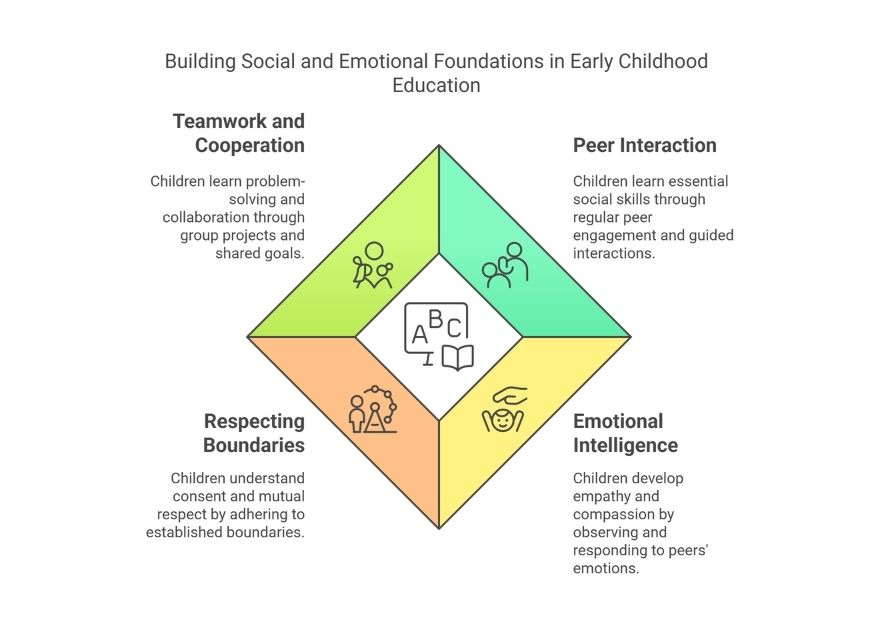
3. Cognitive Development
Early Literacy Foundations
During the preschool years, children rapidly expand their vocabularies and language comprehension skills. They learn to recognize letters, connect sounds to letters (phonemic awareness), and gradually understand that written text carries meaning. Storytime, singing songs, and labeling classroom objects are common activities that boost early literacy. Such exposure sets the stage for more formal reading and writing lessons in kindergarten and beyond.
Numerical Skills and Logical Thinking
Math in early childhood isn’t about complex calculations—it’s about building a foundational understanding of numbers and logical relationships. Simple counting exercises, shape recognition, and sorting activities help children grasp concepts like quantity, patterns, and sequences. When kids count blocks or compare which pile is bigger, they’re engaging in hands-on math that strengthens their analytical thinking skills.
Curiosity and Inquiry
Children are natural explorers, constantly asking “Why?” and testing out their ideas. High-quality early childhood programs harness this curiosity through structured inquiries: mini-science experiments (e.g., observing how plants grow), sensory play with different textures, and open-ended questions that prompt children to hypothesize. By guiding children to observe, predict, and reflect, educators help develop a problem-solving mindset that applies to many academic areas.
Memory and Attention
Activities that involve following instructions, repeating sequences, or recalling story details sharpen children’s short-term memory and improve their attention spans. For example, a teacher might ask children to recall events from a story just read or list the steps taken in a simple recipe. These exercises build the foundational cognitive processes that support more complex learning tasks in future grades.
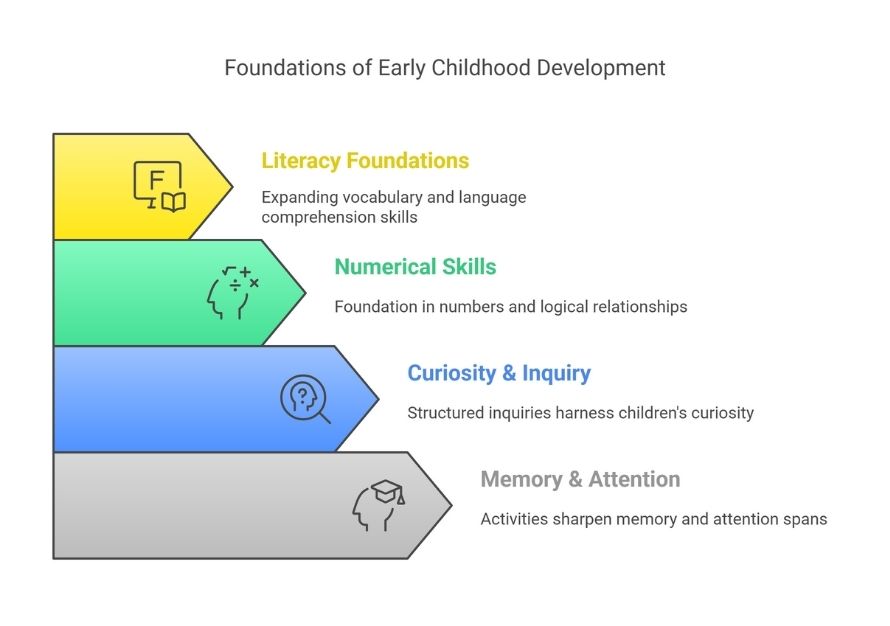
4. Emotional and Behavioral Development
Self-Regulation Skills
Learning to manage impulses, handle frustration, and control one’s emotions is a significant part of early childhood development. Structured environments, with set routines and gentle rules, provide a safe space for children to practice self-regulation. For example, a child might be guided to use words rather than physical actions when upset, or to take deep breaths when feeling overwhelmed. Over time, these strategies become internalized coping mechanisms.
Building Confidence and Self-Esteem
When children are encouraged to try new activities—be it painting, climbing, or speaking in front of a group—they develop courage and resilience. Each successful attempt reinforces self-esteem; each failed attempt presents an opportunity to learn perseverance. Educators and parents can further support this process by offering constructive feedback, celebrating small victories, and reminding children that mistakes are valuable lessons.
Reducing Anxiety and Stress
A structured yet flexible early childhood environment offers predictability. Knowing the schedule—snack time, story time, outdoor play—reduces anxiety by letting children anticipate what comes next. This sense of security fosters emotional stability, making it easier for children to focus on developing skills rather than worrying about unpredictable routines.
Forming Healthy Attachments
Children often form strong bonds with caregivers and teachers who provide consistent emotional support. These positive relationships serve as models for future connections. When children feel seen, heard, and understood, they are more likely to develop healthy patterns of attachment and trust in other relationships (peers, future teachers, etc.).
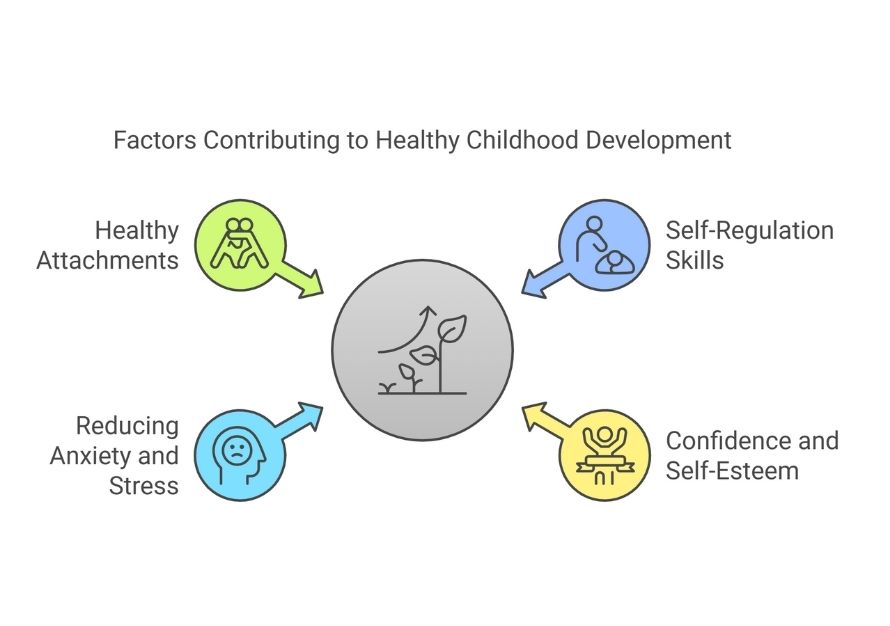
5. School Readiness
Familiarity with Classroom Routines
One of the primary roles of early childhood programs is to help children transition into the more structured world of elementary school. From lining up to go outside, to knowing how to sit quietly during circle time, these “big kid” routines become second nature. As a result, children enter kindergarten feeling more comfortable and confident in a classroom setting.
Fundamental Academic Skills
Children who’ve practiced early literacy and numeracy skills are more likely to hit the ground running in kindergarten. They can recognize letters, numbers, basic shapes, and colors, and often have the vocabulary to communicate needs and ideas clearly. This head start reduces the academic gap between students on the first day of elementary school, making teaching and learning more efficient for everyone.
Emotional Resilience
Starting school can be stressful—even for confident children. However, those who’ve been in a preschool environment have already navigated challenges like separating from parents for part of the day or resolving conflicts with classmates over shared resources. These experiences build resilience, helping them cope better with the social and academic pressures of elementary school.
Long-Term Impact on Academic Trajectory
A foundation of strong early skills can influence a child’s academic path well into middle and high school. Children who start behind in reading or math often struggle to catch up, leading to frustration and decreased engagement. By contrast, children who begin with a solid base are more likely to remain motivated, maintain better grades, and develop a positive self-identity as learners.
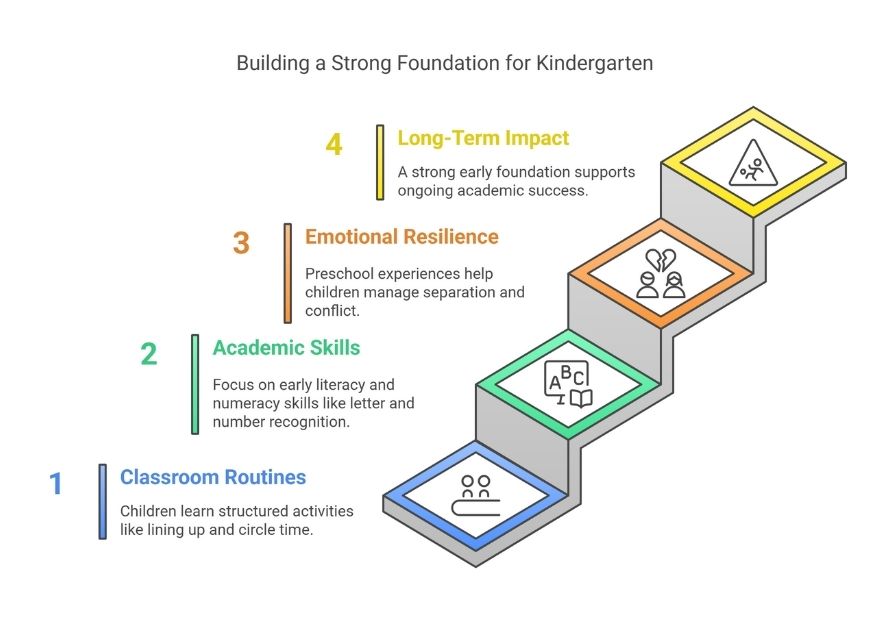
6. Importance of Structured Learning
Balance Between Freedom and Guidance
Structured learning doesn’t mean rigidity—it’s about providing a framework within which children can explore. Having clear objectives, consistent schedules, and developmentally appropriate activities give children a sense of security, so they can focus their energy on learning and creativity. For instance, knowing that after free play comes snack time and then story time helps children mentally prepare for transitions.
Intentional Curriculum
A structured curriculum targets essential developmental milestones. Instead of random activities, lessons are planned to build specific skills—counting, letter recognition, problem-solving, or social-emotional awareness—step by step. This intentionality ensures that children progress steadily and that no critical area of development is neglected.
Assessing Progress and Providing Support
In a structured environment, it’s easier for educators to observe each child’s growth. Whether it’s noticing that a child struggles with scissor cutting or has trouble identifying letters, teachers can intervene early with tailored support. Periodic assessments—formal or informal—enable parents and educators to celebrate milestones and address challenges promptly.
Preparation for Future Educational Settings
Elementary schools typically follow structured routines and curricula. Children who have already experienced a degree of structure—making transitions between activities, following basic rules, and completing assignments—are less likely to feel overwhelmed. This smooth transition benefits their academic performance and emotional well-being.
Encouraging Accountability
Structured learning also instills a sense of responsibility in children. They learn to complete tasks within a set timeframe, clean up after themselves, and take care of classroom materials. These habits foster autonomy and discipline, traits that are invaluable not only in school but in life at large.
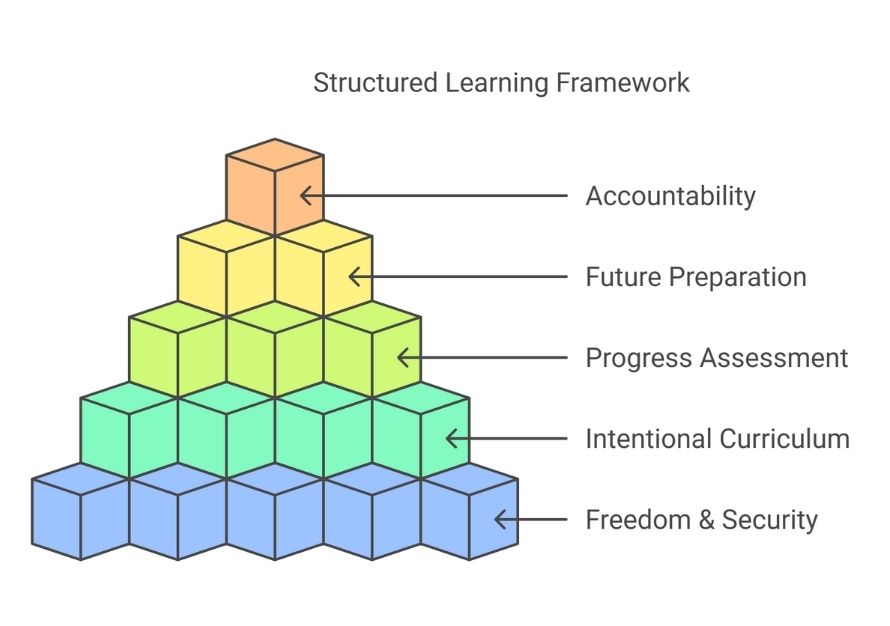
Conclusion
Early childhood development is much more than preparing children for kindergarten; it’s about laying an enduring foundation for all future learning and personal growth. By focusing on socialization skills, cognitive advancement, emotional regulation, and purposeful academic preparation, children are better equipped to handle the challenges and opportunities that lie ahead. Structured learning environments support this process by providing consistency, clear goals, and meaningful activities that are tailored to young minds.
Children who benefit from early childhood programs often grow into more curious, empathetic, and resilient individuals—traits that serve them well far beyond the preschool years. They are more likely to embrace new challenges, exhibit problem-solving skills, and build constructive relationships with peers and educators. As a result, early childhood education stands out as one of the most valuable investments in a child’s future, setting a strong stage for academic success and overall life satisfaction.
Whether you’re a parent, caregiver, or educator, your commitment to fostering these developmental milestones can have an immeasurable impact on a child’s well-being. By recognizing the importance of each domain—social, cognitive, emotional, and academic—and weaving structured learning into daily routines, you help children blossom into confident, capable learners ready to take on the wider world.



